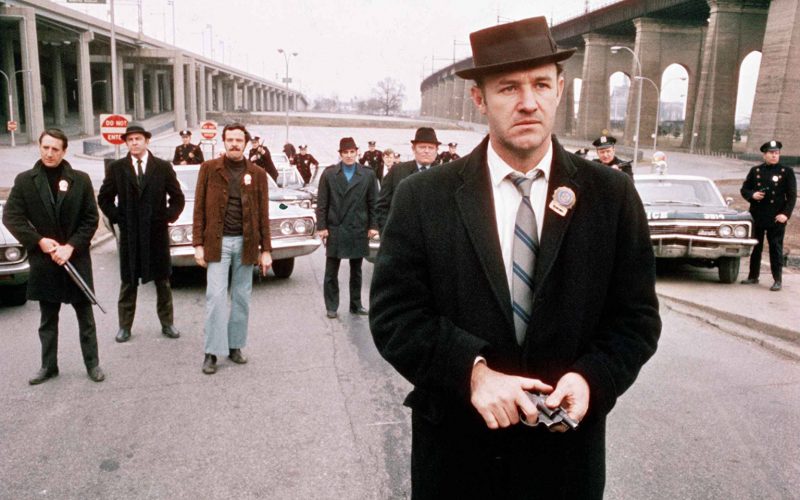The French Connection (1971).
Upon re-watching William Friedkin’s seminal 1971 police procedural for the first time in well over a decade, it struck me how truly groundbreaking a film it is. All the usual tropes, especially those that usually propel the protagonist in lesser, more conventional cop films (revenge, broken marriage, dead partner, etc) are thrown out in favour of a gritty, ultra-realistic fly on the wall documentary approach that, as far as I’m aware, hadn’t been seen in similar films prior to The French Connection, one of the flagship films of the American ‘New Wave’ of ‘70s cinema.
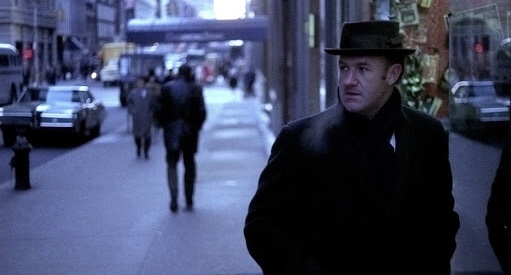
We follow Jimmy ‘Popeye’ Doyle and Buddy ‘Cloudy’ Russo, played by the legendary Gene Hackman and the ever reliable Roy Scheider. These two hard-nosed New York narcotics detectives are tired of bringing in low level perps for nickel and dime bags, and crave a score worthy of their assumed reputations. The real life cops on whom their characters were based, Eddie Egan and Sonny Grosso, would jokingly discuss the casting of the film of their lives as they worked the streets of Brooklyn. Both cops actually have fairly significant acting roles in the film playing Simonson and Klein, and Grosso would go on to have a career in film as a technical advisor on manners of police procedure as well as appearing in small roles in films such as The Seven-Ups (1973), Report to the Commissioner (1975) and Friedkin’s Cruising (1980).
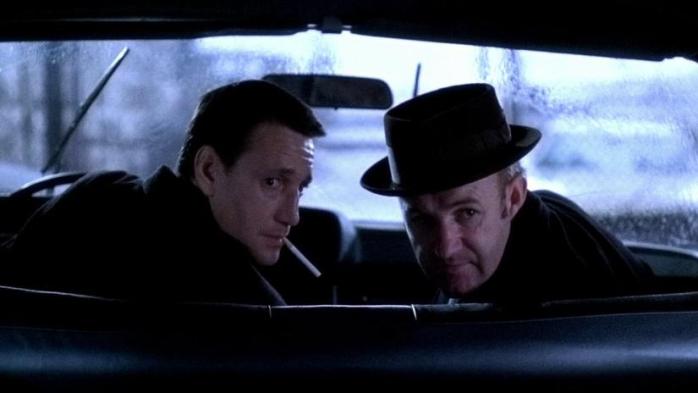
But it’s the two stars who form the rigid backbone of The French Connection. Hackman’s racist, rule bending Doyle commands the screen with an intense, obsessive drive to track down and incarcerate the French drug smuggler Alain Charnier, played with an effortless, erudite charm by Fernando Rey. In fact, so fierce is Doyle’s drive, that even in the film’s shocking climax where Doyle guns down the wrong man, any remorse quickly dissipates, replaced by his unending drive to catch ‘Frog One’. That final scene, so bleak and numbing and without resolution for the viewer, would be the basis for the entirely fictitious sequel and stays true to the real life events of the case, without resorting to a comforting Hollywood ending.
One area where the film really excels is in the technical merits of Friedkin’s directorial style, aided by the muted colours and shaky cinematography of Owen Roizman and Don Ellis’ edgy score. Friedkin imbues the film with an almost tangible, tactile grime that we can feel and smell. The New York of the early ‘70s was a far different place to the city that would have a significant clean-up in subsequent decades and the viewer is placed slap bang in the middle of this cold, unwelcoming metropolis. We’re shown some of the poorer, dirtier urban slums of New York and one can almost feel the biting cold of winter as Doyle and Russo spend hours tailing their quarry, mostly on foot.
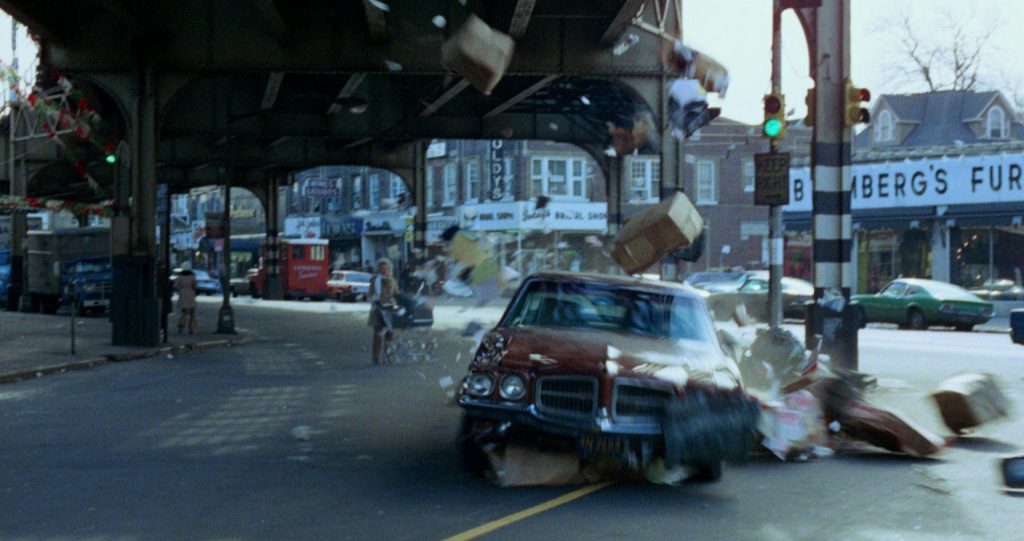
The bulk of the The French Connection focuses on the less glamorous side of policing seldom shown in film, where stakeouts and tails can go on for days, there’s nothing romanticised here. Our hero cops drink coffee from paper cups in a cold doorway whilst Charnier enjoys fine dining in the comfort of a swish brasserie across the street. This is extremely brave as on paper endless scenes of men following other men seems as if it would be mind numbing at best, but Friedkin presents it in such a way that one can’t help but be riveted as they tail, then lose and then again catch up with their targets only to lose them again. We spend more time than expected in a scene where a seized car is searched for stashed drugs. It shows both the lengths the criminals will go to to conceal their drugs and the ingenuity they employ as well as the cop’s dogged determination and dedication to their often thankless job. Both sides of the tracks between crime and law enforcement are walked by the viewer, something that works to brilliant effect from a narrative standpoint. This heightened investigative realism paved the way for shows like The Wire decades later, but must have seemed so fresh to audiences in 1971.
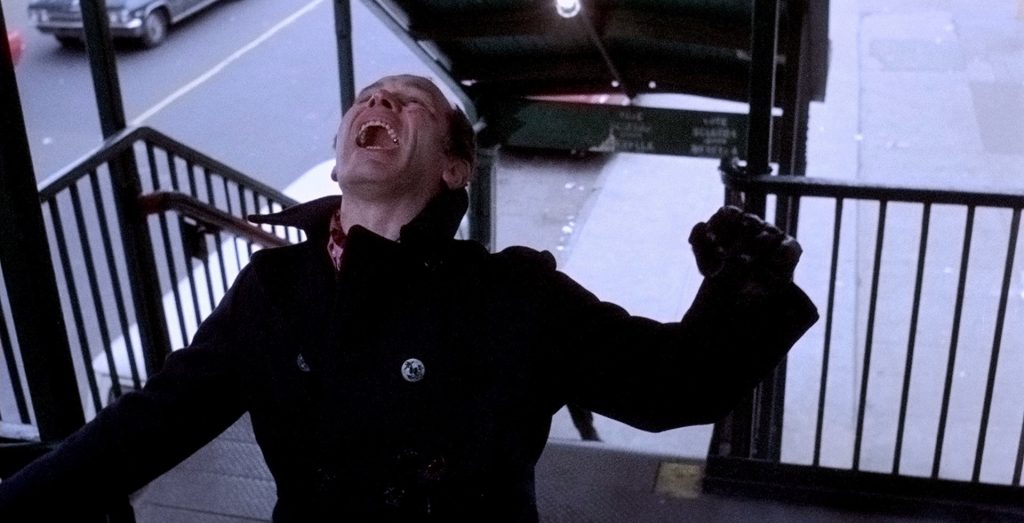
The numerous chase scenes are shot with a wildly nervous style of editing. The first foot chase is a particular highlight. Doyle and Russo run after a perp only to catch him and use their tried and tested ‘picking your feet in Poughkeepsie’ interrogation, where the criminal is baffled by a question he can neither answer nor comprehend leading to a strained confession. It’s superbly edited and comes from Egan and Grosso’s real life antics. The now legendary car/L-train chase, allegedly shot without a permit, is kinetic, raw and visceral and a forerunner to the incredible car chase in Friedkin’s 1985 cop thriller, To Live and Die in L.A.
Aside from all the narrative skill and directorial flair, the main hook remains a powerhouse central performance. Hackman’s Doyle is a man who doesn’t care for social pleasantries and has no qualms about entering and turning over a bar with a predominately black clientele with a complete lack of subtlety. At first he seems to hold a simmering racial prejudice for the men he’s searching but his true intentions are shown when he corners, in a back room, a known and trusted source for information. Doyle doesn’t care about skin colour, class, or social standing, he’s driven by a desire to enforce the law first and foremost and there’s a begrudging respect from the man he’s pressing for information that borders on admiration. This is a layered film with much to unearth on repeat viewings. Convention is certainly something the film doesn’t play to.
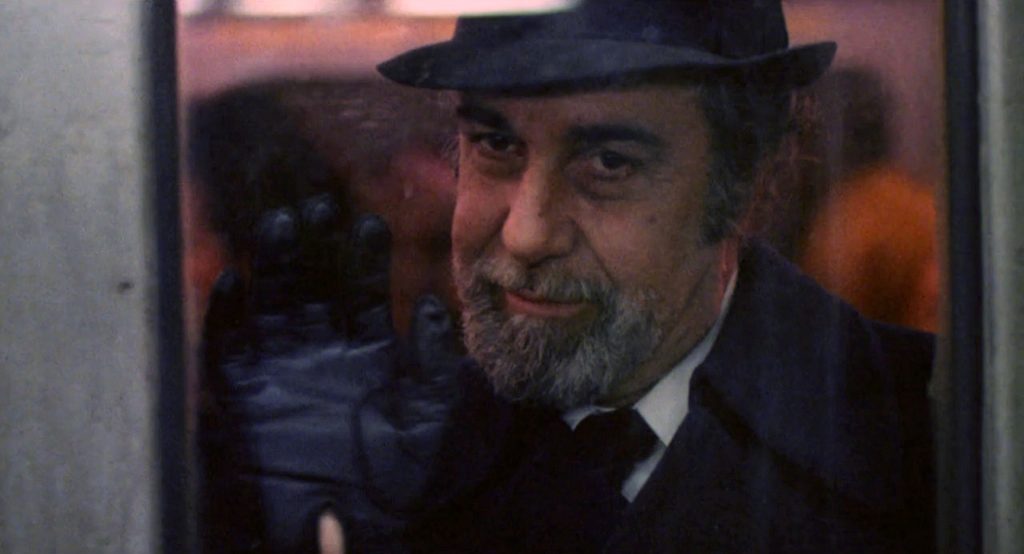
The French Connection is a truly unique, thoroughly original cop drama; in many ways more of a staged documentary than a film. Go into it without expectation and enjoy it for what it is, a brilliant example of (for its time) one of a kind, bravura film-making from one of Hollywood’s true maverick directors. Just don’t get caught pickin’ ya feet!
Film ‘89 Verdict – 10/10

